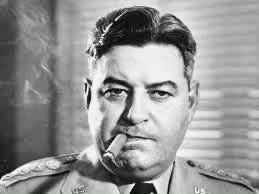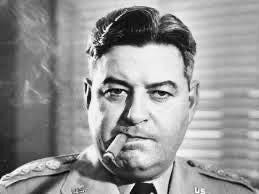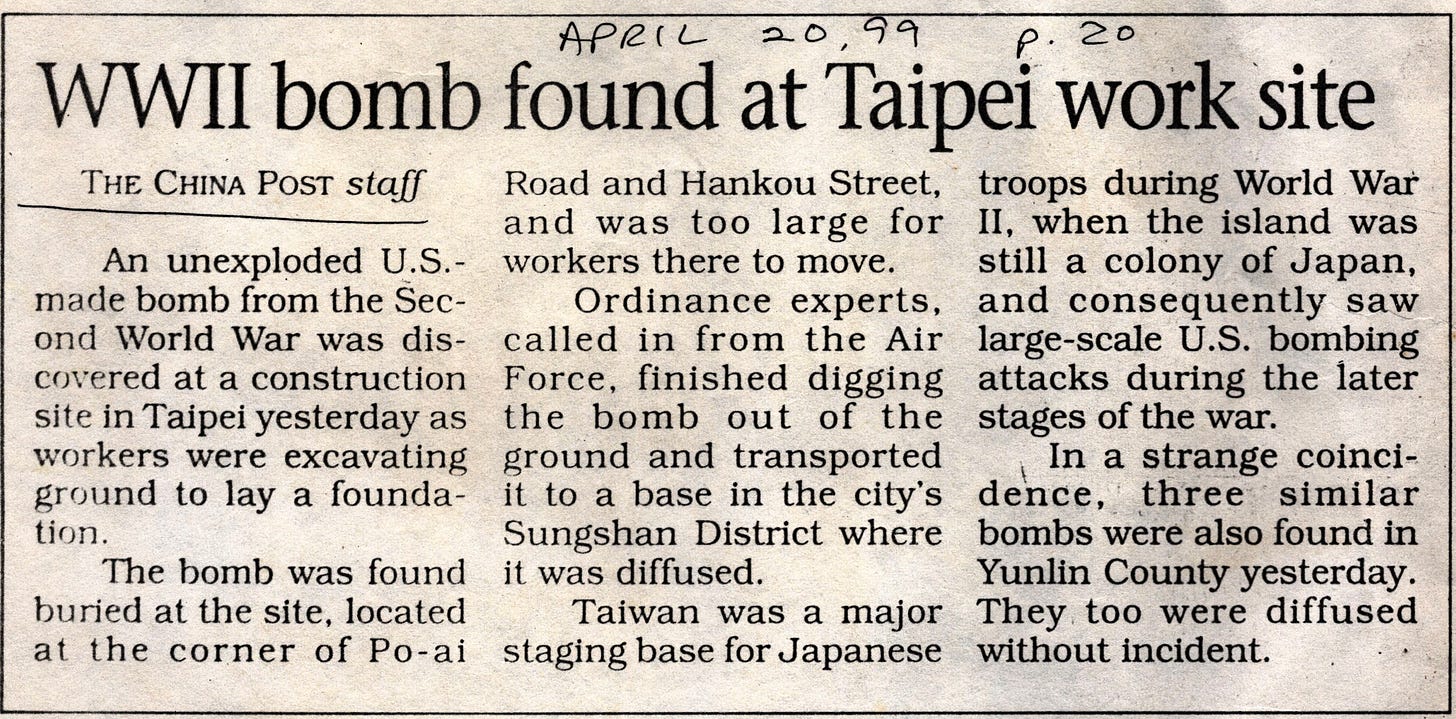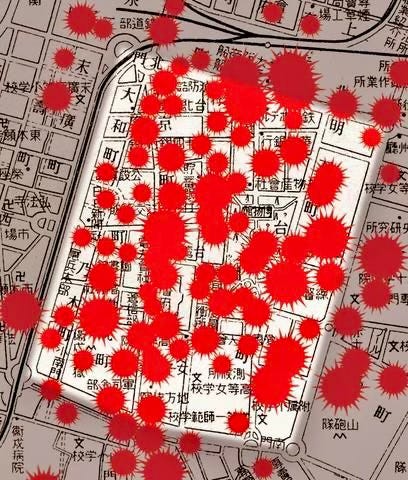China In Arms BOOKSTORE and GIFT SHOP!
Follow on Twitter
Subscribe: $5 Month/$50 Annual (unable to secure a subscription contact the bank for permission for Stripe deposits).
24 October 2024 (Thursday)
Taiwan Legacy of Lemay’s Bombing Campaign
Uncovering Forgotten WW2 Memories in Formosa
By Wendell Minnick (Whiskey Mike) 顏文德
TAIPEI - Who could resist loving a face like that?

For decades, local newspapers have reported on the discovery of remnants from wartime activities, bringing to light the lasting impact of Curtis LeMay’s Bomber Command. These "party favors" offer a sobering reminder of a turbulent era.
As urban development projects continue to extend the Metro Rail Transit (MRT) and other infrastructures, construction crews stumble upon long-hidden artifacts and remnants of bombs, thus igniting a renewed interest in the historical narrative between Japan, Formosa, and the United States during World War II.
Understandably, sentiments towards historical figures like Curtis LeMay can be varied, often colored by the outcome of conflicts and their subsequent narratives. While some view the strategic decisions of the era with a critical lens, examining potential war crimes and moral implications, others regard the outcomes as pivotal moments that shaped the post-war world.
In July 2004, MRT construction workers unearthed a 1000lb bomb at the Taipei Sungshan Airport via a bulldozer. Taiwan military personnel defused the bomb with ease, as the trigger mechanism had rusted away. The airport was used by the Japanese Air Force during the war and served as a primary target by the United States.
While it is understandable to view the bombing of Formosa (now Taiwan) by the United States as horrifying, the justification at the time was rooted in the fact that Formosa was part of Japan.
The population spoke Japanese and considered themselves as Japanese as those in Tokyo. They sent troops to serve and endured the same hardships. Japanese prisoner of war camps in Formosa were brutal for Western Allies. Former Taiwan President Lee Teng-hui’s elder brother died in Manila during the war while in the Imperial Japanese Navy.
In May 1945, the United States conducted a series of bombing raids on Formosa, culminating in a significant attack near the war's end when 117 B-24 Liberator bombers dropped 3,800 bombs on key targets across the island resulting in 3,000 deaths and around 10,000 dead.
Perhaps an unnecessary air mission. Japan’s air defense capabilities had been destroyed earlier by the United States during the Formosa Air Battle in October 1944 that obliterated Japanese air assets in Formosa and Okinawa.
In today’s post-modern, progressive worldview, there is often criticism and disgust over the bombing, but these reactions also come with opportunities for thoughtful reflection and discussion.






